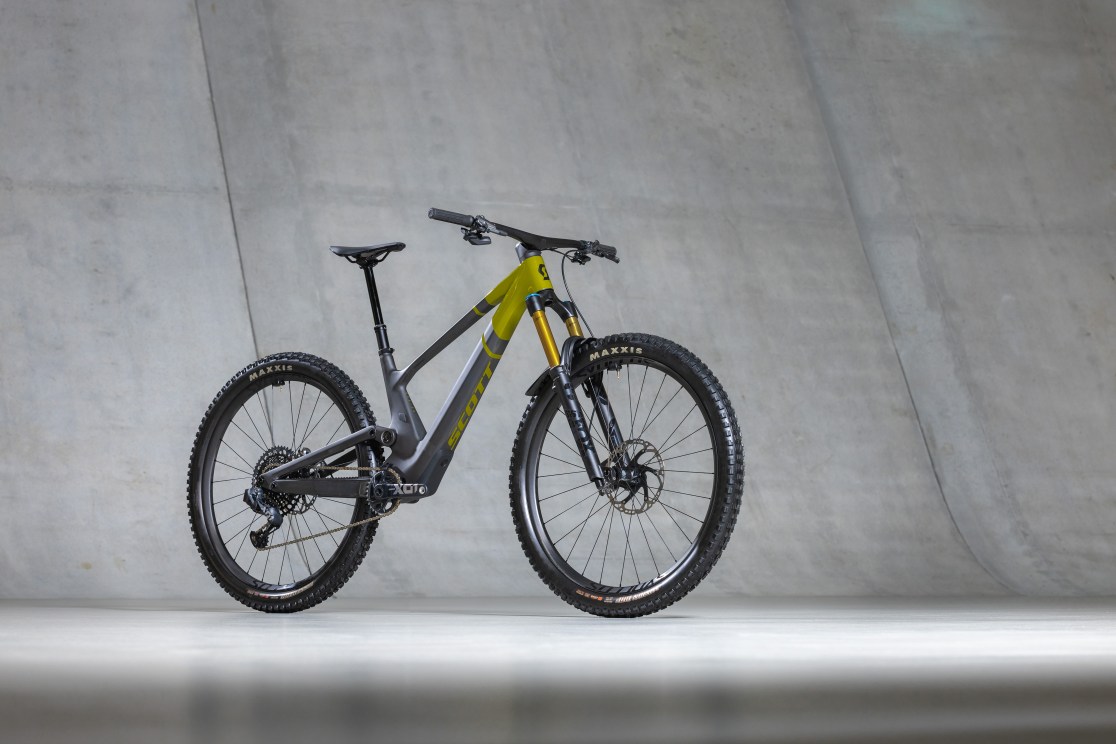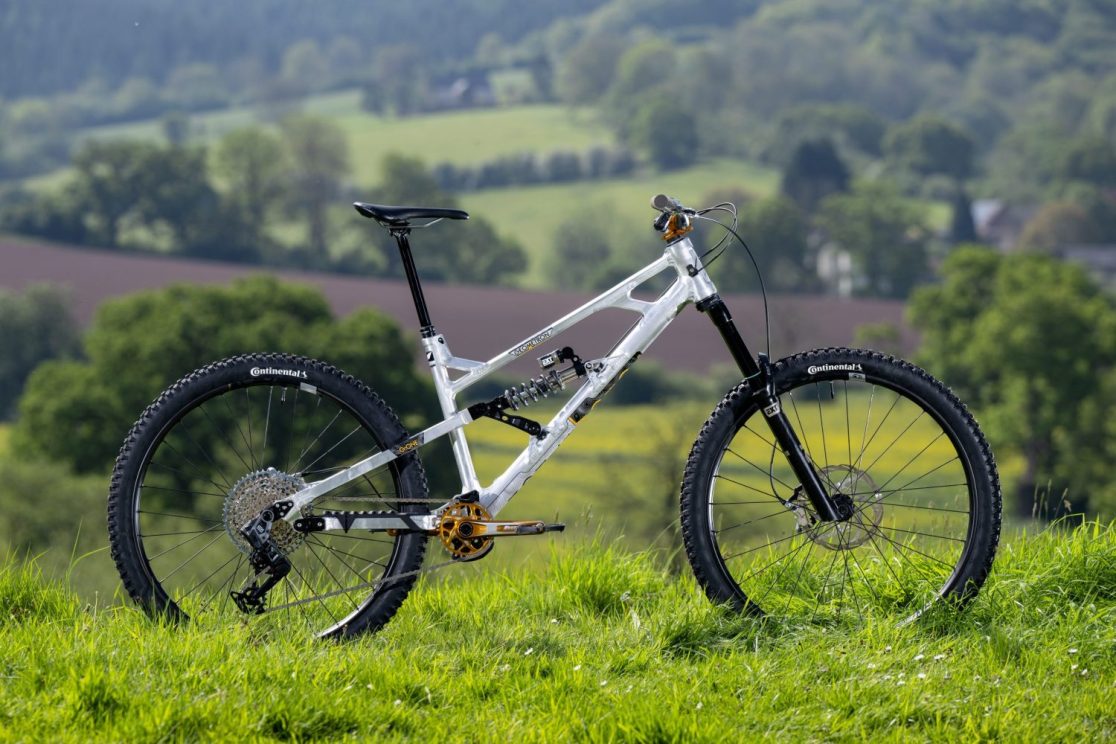Benji opines on what is right and wrong with the world of mountain bikes right now.
Words by Benji, photography as credited

Choosing a mountain bike is like buying a house. I don’t just mean that it’s way more expensive to get a decent one than it used to be. I mean that the selection process is governed by three things. But instead of ‘location, location, location’, mountain bike choosing is dictated by ‘geometry, geometry, geometry’.
Or it should be anyway. People still choose bikes due to what spec is the fanciest at any given price point (which is hugely overestimated in importance). Or which bike just looks the coolest (which is a sound and honest reasoning that I’m totally fine with).
Comply with me
I’m firmly of the opinion that geometry trumps all. Experience has shown that a bike with a ‘poor’ spec but the most suitable geometry is significantly more capable – and fun – than a bike with ‘great value’ spec but ill-suited geometry.
It’s more than a decade since Mondraker came out with the genuinely revolutionary concept of Forward Geometry (nutshell: massively more reach) and recent years have seen a massive cooling off of geometry change. Even among the MTB Illuminati (of which I am the current bursar), there’s a general air of reactionariness seeping back in. ‘Bike geometry is sorted now’ is an oft-heard sentiment.
If anything, I predict The New Thing will be flex. Or chassis compliance to give its Sunday name. Compliance will come to the fore for two reasons. Firstly, it’s just something new to bang on about now that ‘bike geometry is sorted’. And secondly, ebikes. Ebikes are rad. But ebikes ride hella stiff. They’re like riding a piece of scaffold down the trail. Scaffold with a load of D cell batteries in it. A bit of ‘feel is something that analogue bikes can still uniquely offer’.
Tall tales
So to answer the question ‘Where are we going next with mountain bike geometry?’, the answer is: nowhere. ‘Bike geometry is sorted now’, remember? However, to empty my spleen via its system of vents, I will now pontificate about what should happen next with mountain bike geometry.
Speaking as one of the lankier streaks of piss out there on the hills, my general theory is that Medium mountain bikes have been okay-ish in terms of geometry. But I would also point out that in the post-Forward Geometry era, Small is the new Medium, in terms of reach at least. Essentially, my reckoning is that the current geometry of Small size trail bikes serves its diminutive rider very well. Anyone of average height (175cm) or above is being short-changed. Literally almost.
Proportional geometry is the thing that should be what we do next. But it will cost manufacturers more money as they’ll have to produce more frame parts. And the current proportional geometry is nowhere near where it needs to be – adding a mere 10mm of chainstay from Small all the way up to X-Large? Seriously?
There is also a circular elephant in the room here: wheel sizes. You know how children’s bikes are sized by wheel size? We should be doing the same for grown-ups. Small folk on 26in? Medium on 27.5in? Large on mullets? X-Large on full 29in? This is a debate for another time.
Percentagize me
Taking a recent Singletrack World Magazine MTB of the Year winner – the Scott Genius ST – I’m going to put it through my patent pending Benji Percentagizer™ and work out what would happen if we were to properly scale up the geometry into a Medium, Large and X-Large if we were to use the reach figure as the baseline (seeing as reach is the only measurement of distance that’s appreciably changed in the past decade or so).
Scott Genuis ST geometry
| S | M | L | XL | ||
| A | head tube angle (-0.6° setting) | 63.9° | 63.9° | 63.9° | 63.9° |
| B | head tube length | 90mm | 100mm | 120mm | 135mm |
| C | top tube horizontal | 570.1mm | 602.2mm | 631.3mm | 659.3mm |
| D | standover height | 728.5mm | 738.5mm | 753.5mm | 768.5mm |
| E | BB offset | -33mm | -33mm | -33mm | -33mm |
| F | BB height | 342.5mm | 342.5mm | 342.5mm | 342.5mm |
| G | wheel base | 1,195mm | 1,229mm | 1,263mm | 1,294mm |
| i | BB centre to top of seat tube | 380mm | 410mm | 440mm | 470mm |
| j | seat angle | 76.8° | 77.1° | 77.2° | 77.4° |
| K | chainstay | 440mm | 440mm | 440mm | 440mm |
| L | reach | 430mm | 460mm | 485mm | 510mm |
| M | stack | 617mm | 626.1mm | 644.2mm | 657.8mm |
Percentagizer geometry
| S | M | L | XL | ||
| B | head tube length | 90mm | 110mm | 130mm | 150mm |
| E | BB offset | -33mm | -31.35 | -29.78mm | -28.29mm |
| K | chainstay | 440mm | 448mm | 456.25mm | 464.65mm |
Why have I chosen these three metrics? And only these three? Fundamentally, I think geometry in terms of head angle and seat angle should be the same for all sizes of riders. Same goes for ancillary things like stem length and crank length – off-road should just be undertaken on short cranks (160mm or less) for clearance reasons (fit easier ratio gearing if you’re worried about losing leverage). And as for standover and seat tube lengths, well, they should just be as low as possible innit. End of.
Oh, and this particular read-out from the Benji Percentagizer™ is for trail bike geometry ’cos that’s what the Scott Genius ST is. And at the end of the day, in my opinion, it’s trail bikes that most of us are interested in.
How have I arrived at these new geometries numbers? Unfortunately, that is top secret information while I await the patent currently pending for the Benji Percentagizer™. However, if you own a calculator, I dare say you can find my workings.

Hit your numbers
Let us now pore over the new geometry numbers. I’m happy with most of them. There’s only the head tube lengths that I have an issue with. Which is to be expected as the standard head tube lengths on the Scott Genius ST are very short. An X-Large trail bike should have something approaching a 140mm head tube length in my opinion. There’s only so much you can sort out with changing to a different rise of handlebar.
With short head tubes your handlebars are too low. This makes it harder to loft the bike over things. It also makes your hands and shoulders ache after an hour or so.
With short chainstays, the bike just gets too wheelie-happy on ascents. It also makes for jittery fifty-pence-piecing around corners. And there’s just generally not enough grip being levered into the front tyre contact patch, which is not good, anywhere. If you want short stays for jumps, get a 26in wheel jump bike.
Idle thought: Should the Benji Percentagizer™ have an alarm system that goes off and rejects numbers out of certain bounds? ‘AWOOGA!! These chainstays are too short (that’s not my puppy, its wheels are too small)’, type of thing. Yes, probably. It is pure vapourware after all.

I approve this message
Are there any bike brands out there right now that are offering Benji Percentagizer™ Approved geometry? The short answer is: no. The longer answer is: yes in specific sizes.
Obviously, the Scott Genius is still around for the Small size riders. For Medium frame size riders, the Cotic Jeht is a close candidate for a Benji Percentagizer™ Approved sticker. With Large and X-Large pilots, things get a bit trickier. After a probably-not-thorough-enough trawl, I could only really proffer the Orange Stage 7 for X-Large riders. I could not find a Large size bike with anything close enough to Percentagizer™ length chainstays. Maybe you could send in your suggestions on a postcard? Perhaps an email would be better, thinking about it.
Yes, there is the Geometron G1 but that’s arguably stepping out of most folks’ trail bike remit due to its 175mm of travel (personally I’d be fine with a G1 as a trail bike but that’s a story for another time).
If you’re finding all of this rather hard to follow… just pick the bike that looks coolest. You’ll be fine. Bike geometry is sorted now anyway, right?


Every time I start thinking about what is the best bike geometry, I remember that people can and do ride unicycles for XC and DH.Could it be that it doesn’t matter what the geometry is, and that we adapt to whatever is the current fashion used by the racing teams?
Yep.
Someone with the skills can get down anything on pretty much any MTB. See Yohann Barrel riding a cross bike down whistlers black runs.
I like how my bikes ride, would something else be faster? Probably. I just ride for fun. My cove stiffee was super slack for the time (70 degree head angle). My g13 was slack at the time (64 degree head angle).
£1000 on skills coaching would make more difference down hill than any bike.
Losing 10kg off my belly would make more of difference up hill.
I’m with Eddy Merrex. I need to ride up grades, not buy upgrades.
It was an interesting article. I also loved the grim donut series on pink bike. I did wonder why they didn’t try and sell 10/50 or 100 of them. Someone made some with similar geometry, I don’t think I’ve ever seen a photo of one built up.
Agree 100% about XL head tubes, non of them are long enough and leave me with a saddle miles higher than the bars. Only option is a stupid amount of spacers or a stupidly high bar, both of which are aesthetically sub optimal.
I assume it’s because very long head tubes don’t look pretty, much like XL bikes with 26″ wheels?
Slowly and with much greater difficulty.
That was what happened in the late ‘80s – XC dominated and MTBs changed shape to be better uphill which made them worse downhill. Then freeride got a bit carried away and BBs went sky high. Eventually things starting heading back towards klunkers and then on toward motocross geometry but adjusted so pedalling works too.
As Benji said, it’s pretty sorted now, just needs to scale better for sizes.
FTFY
What geometry for robot ai?
I would like taller front ends. I would also like lighter bikes for short travel duties. It’s getting a bit ridiculous imho that short travel bikes seem to be built to dh strength and therefore weights.
High rise bars look awesome.
Not on an XC bike they don’t.
I kind of think it’s gone too far. I’ve got a ‘trail’ bike. 140/130. Bought for the geometry for my southern forest riding, would prefer a bit more travel for the occasional big hit, but that doesn’t seem to exist.
to what limit? A little bend looks better than flat (IMO). But some of the high rise things these days look ridiculous. If that’s where you want your bars then so be it, no argument for physiology.
But that’s a glaring condemnation on the bike brands for not making a bike that fits taller people.
High rise bars are generally better than a long head tube. A long head tube, just like lots if spacers, moves the bars further and further backwards. You end up losing reach, having a super long front-centre to compensate, and having less weight on the front axle.
I’ve just bought 50mm risers for my new bike before I’ve even got it cos I know the stack isn’t going to be high enough. I have the mountain bikers curse of long legs/short torso
It’s a Specialized and their ‘S’ sizing is reach based rather than increasing seat tube and head tube as well as length. As another consequence I’m going to have an unsightly amount of the 170mm AXS dropper showing above the collar
I’ve gone for an S4 which is technically a large as that’s what I normally have and a reach of around 480mm seems to suit me – I’ve only found this out recently, as my old Kenevo felt too short in the front and the Ragley I built up last year feels great. But the Ragley has a fairly high stack
It (Specialized sizing) might work, I’ll find out shortly….
@eddd – other way round. If your headtube is long so that you don’t need to artificially raise the bars either with spacers or tall bars, you achieve close to the frame’s reach figure.
Adding spacers or running tall bars on a shorter headtubed frame reduces the effective reach. Tall bars and spacers do the same thing unless you roll the bars forward which also effectively lengthens the stem , so has other handing effects.
So here we are talking about bike geometry! Is the the same as roadies constantly discussing gears?
Just go out and ride the bike.
@Sillyoldman to get to that given reach figure, a longer head tube needs a longer front-centre. Like spacers, the tube goes up and back, not just up.
I need reach but like a short front centre, so I really like S sizing. I slam my stem and use high rise bars.
@eddd Any quoted teach figure is measured from the top of the headtube, so a tall headtube without a stack of spacers and/or tall bars accurately reflects the each figure achieved. If you need to move the bars up from a low headtube, you’re shortening the reach vs what’s quoted. Front centre is a combination of other additional metrics.
Here here. It’s taken me long enough but I’m firmly a geometry geek/bore.
There’s also Nicolai’s shorter-travel bikes such as the 130mm-travel Saturn 14 that are very much from the same geometry school of thought. 14.5kg inc pedals on a sensible build and nearly 3kg lighter than my G1. Not so subtle advert, there’s a XL one of those for sale at the moment.
As well as my XL G1 I’ve discovered that (some) current XXL Santa Cruz bikes fit me well despite being well below the recommended height chart at ‘only’ 187cm. XXL Tallboy with a 518mm reach, 155mm HT and 41mm BB drop. Chainstays are 446mm and I think I’d like them to be longer, but that’s better than others I looked at and are on par with the Saturn 14 above. Would be nice if the ST was shorter but I’ve still squeezed a 210mm OneUp on there so I guess it’s short enough.
It is a good article, I enjoyed it a lot Benji.
I like what I like, but it’s always interesting to see what others prefer. And then people like Bryceland who is (6 foot?) and rides a medium, very fast for all he does (and not just tricks in the woods)
Being able to alter bar height using different rise bars means multiple bar heights are possible without effecting reach. More riders and their bar height preferences can be accommodated without compromising the handling for anyone. Of course headtube can be too short on larger sizes… plenty of examples of that out there (especially in the carbon world)… but super long headtubes bring their own compromises and limitations.
If we adjust bar height we’re either shortening reach or effectively lengthening the stem but imho that doesn’t matter too much, not a problem within the normal range of adjustments. What’s more important in a bike is that the front centre and rear centre are balanced, as Benji’s getting at with variable CS length. Most of the time most of your weight is through the BB so if FC and RC are balanced for you then I’m not sure the exact reach figure really matters? e.g. I might like a longer reach on a bike that has a longer rear end, but if the bike has a short rear and proportionately short front / reach too it might also feel good (just in different places or for different riding).
Look to Geometron for well sorted geometry. Chris Porter’s geo has trickled out worldwide to other manufacturers since the first ones in 2015. my Kenevo SL is very very close to my “longest” 2015 Geometron G1.